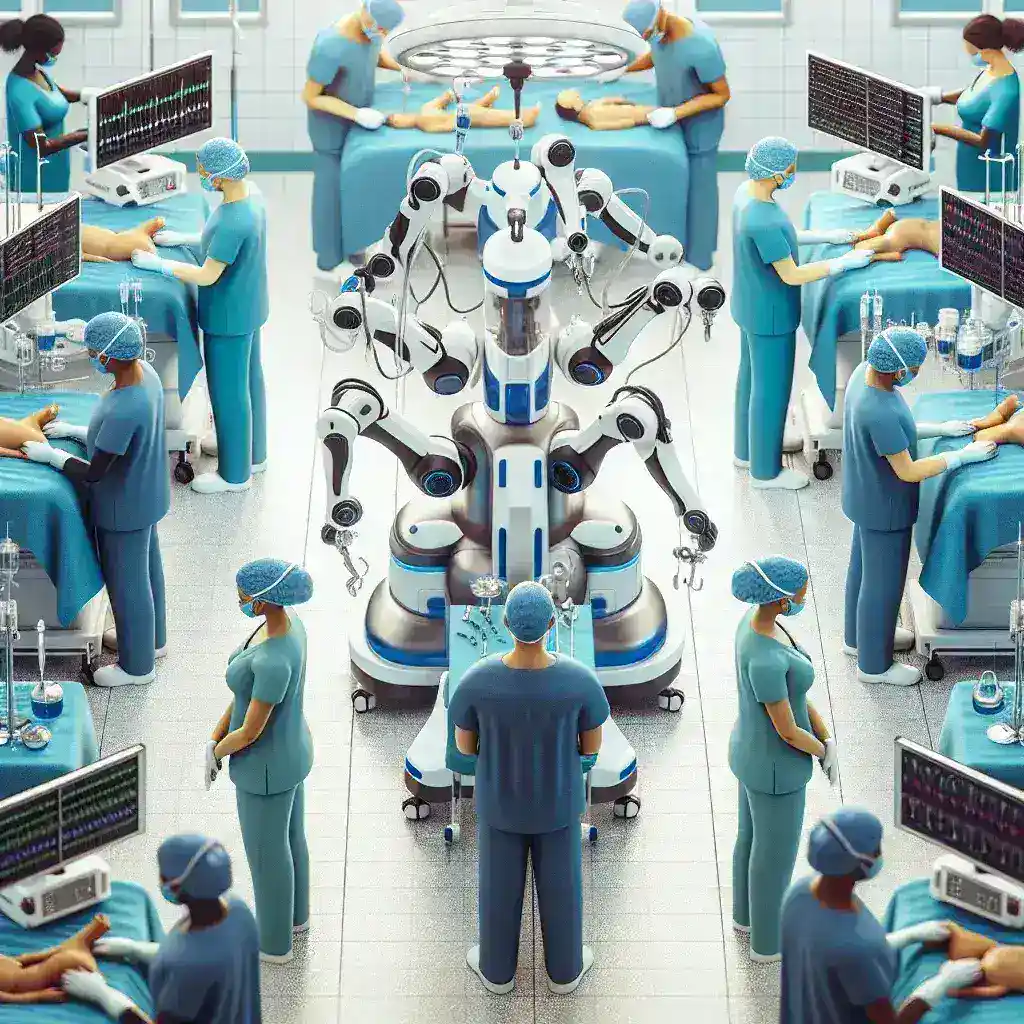Introduction to Surgical Robotics in the NHS
The integration of surgical robots into the healthcare systems of the National Health Service (NHS) in the UK marks a significant advancement in medical technology. Over the recent years, the multi hospital adoption of surgical robots has transformed surgical practices, enhancing precision and patient outcomes. This article delves into the history, current trends, and future implications of surgical robots in the NHS, highlighting their benefits and challenges.
A Brief History of Surgical Robots
The journey of surgical robotics began in the late 20th century with the introduction of the first robotic surgical systems. Initially, these systems were used for minimally invasive surgeries, allowing surgeons to perform complex procedures with enhanced accuracy. The most notable advancement came with the launch of the da Vinci Surgical System in 2000, which set the standard for robotic-assisted surgeries.
In recent years, the NHS has recognized the potential benefits of robotic systems, leading to a gradual increase in their adoption across various hospitals. This shift is not merely a trend; it is a response to the growing demand for more efficient and effective surgical interventions.
Current Trends in Multi-Hospital Adoption
Increased Availability and Accessibility
One of the critical trends in the adoption of surgical robots across NHS hospitals is the increased availability and accessibility of these technologies. With significant investments from both the NHS and private entities, hospitals are now more equipped than ever to embrace robotic surgery. This expansion is evident in various specialties, including urology, gynecology, and general surgery.
Training and Skill Development
Another essential aspect of this multi-hospital adoption is the emphasis on training and skill development for surgeons. Medical institutions are investing in comprehensive training programs to equip healthcare professionals with the necessary skills to operate robotic systems effectively. This focus on education not only enhances surgical proficiency but also boosts surgeon confidence.
Patient-Centered Care
Patient-centered care is at the forefront of the NHS’s mission, and the adoption of robotic systems aligns perfectly with this approach. Surgical robots offer patients reduced recovery times, lower risk of complications, and shorter hospital stays. Hospitals that adopt robotic technology are increasingly able to provide enhanced care, meeting the needs and expectations of patients.
The Benefits of Robotic Surgery
Enhanced Precision and Control
One of the most significant advantages of robotic surgery is the enhanced precision and control it offers surgeons. With robotic systems, surgeons can operate with greater dexterity, translating their hand movements into smaller, more precise movements of the surgical instruments.
Minimally Invasive Procedures
Robotic-assisted surgeries are often minimally invasive, which results in smaller incisions, less pain, and quicker recovery times for patients. This aspect of robotic surgery is particularly beneficial for patients who may be at higher risk for complications associated with traditional open surgeries.
Improved Outcomes
Numerous studies have demonstrated that robotic surgeries often result in improved patient outcomes, including lower rates of postoperative complications and shorter hospital stays. This improvement in outcomes is a compelling reason for the continued adoption of robotic technologies across NHS hospitals.
Challenges and Considerations
Cost Implications
While the benefits of robotic surgery are evident, the cost implications present a significant challenge for many NHS hospitals. The initial investment in robotic systems, along with ongoing maintenance and training costs, can be substantial. Hospitals must weigh these costs against the potential benefits to ensure that they are making sound financial decisions.
Technological Limitations
Despite the advances in surgical robotics, there are still technological limitations that need to be addressed. Surgeons must remain aware of the capabilities and restrictions of robotic systems to ensure safe and effective surgeries.
Integration into Existing Systems
Integrating robotic systems into existing surgical workflows can be challenging. Hospitals must consider how these technologies will fit into their current practices, requiring careful planning and collaboration among medical staff.
Future Predictions for Surgical Robots in NHS
Continued Growth and Innovation
The future of surgical robotics within the NHS is promising. As technology continues to evolve, we can expect further advancements in robotic capabilities, making surgeries even more precise and efficient. This growth will likely lead to an increased prevalence of robotic systems across a broader range of specialties.
Personalized Medicine
With the rise of personalized medicine, robotic surgery may become more tailored to individual patient needs. Future surgical robots may incorporate artificial intelligence, allowing for more adaptive and responsive surgical procedures.
Collaborative Robotics
We may also see the emergence of collaborative robotics, where surgical robots and human surgeons work in tandem. This collaboration could revolutionize the way surgeries are performed, combining the strengths of human intuition with the precision of robotic technology.
Conclusion
The multi hospital adoption of surgical robots across the NHS represents a transformative shift in healthcare delivery. As hospitals continue to embrace these technologies, patients can look forward to enhanced surgical experiences and improved outcomes. While challenges such as costs and technological limitations remain, the benefits of surgical robotics are undeniable. The future holds great potential for continued innovation and improvement in surgical practices, ultimately leading to better patient care.

